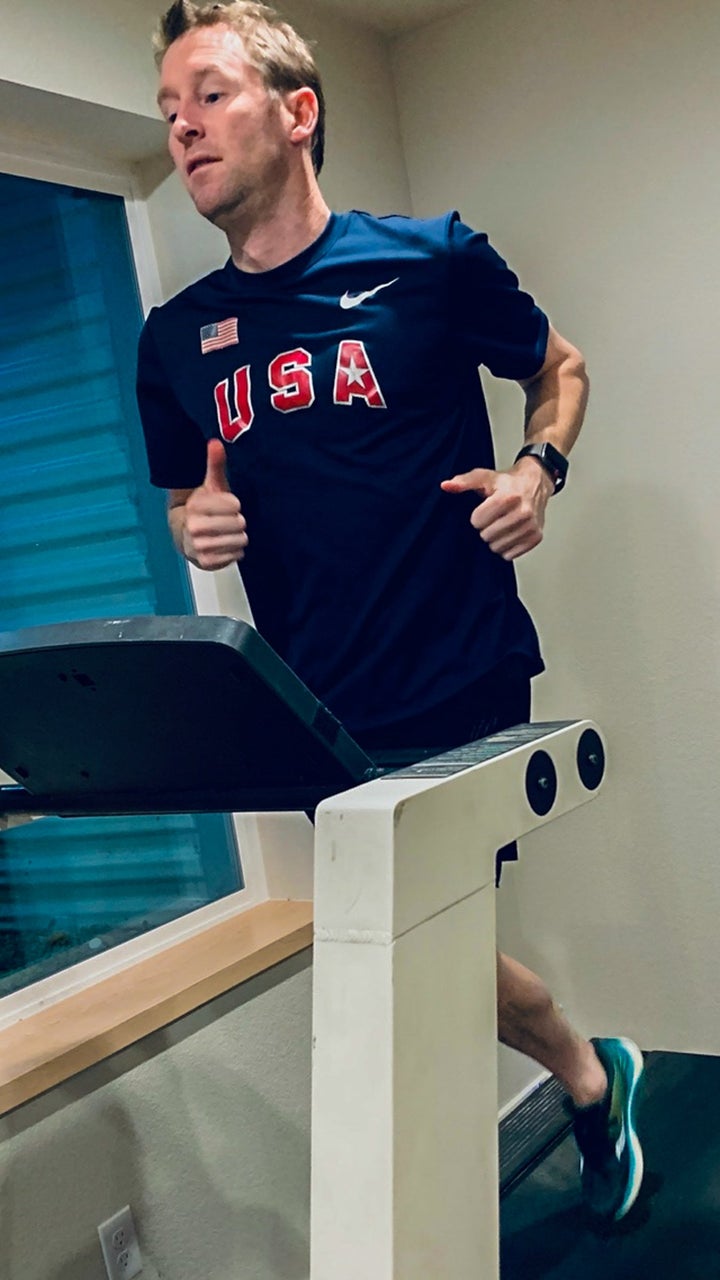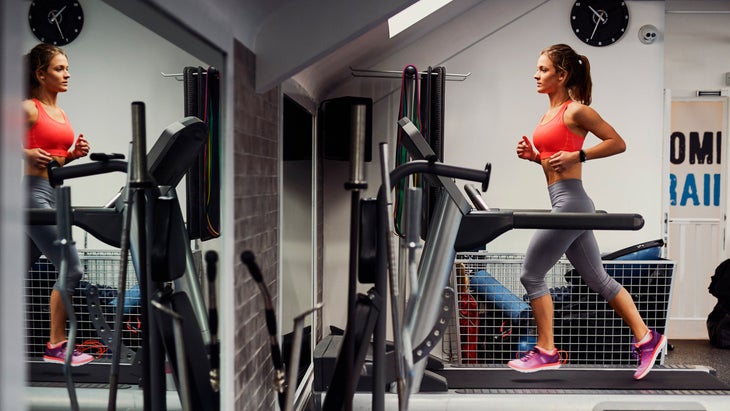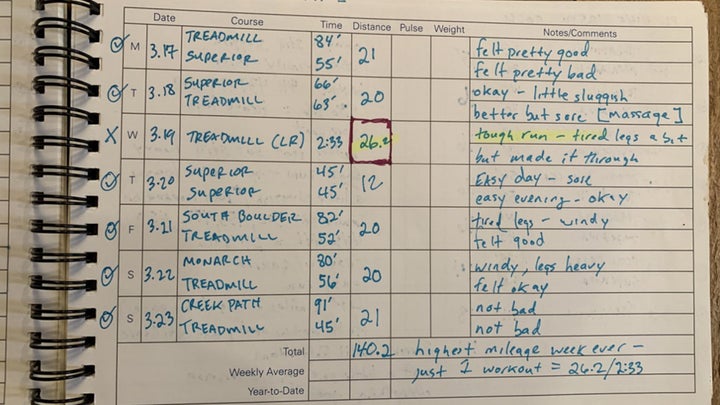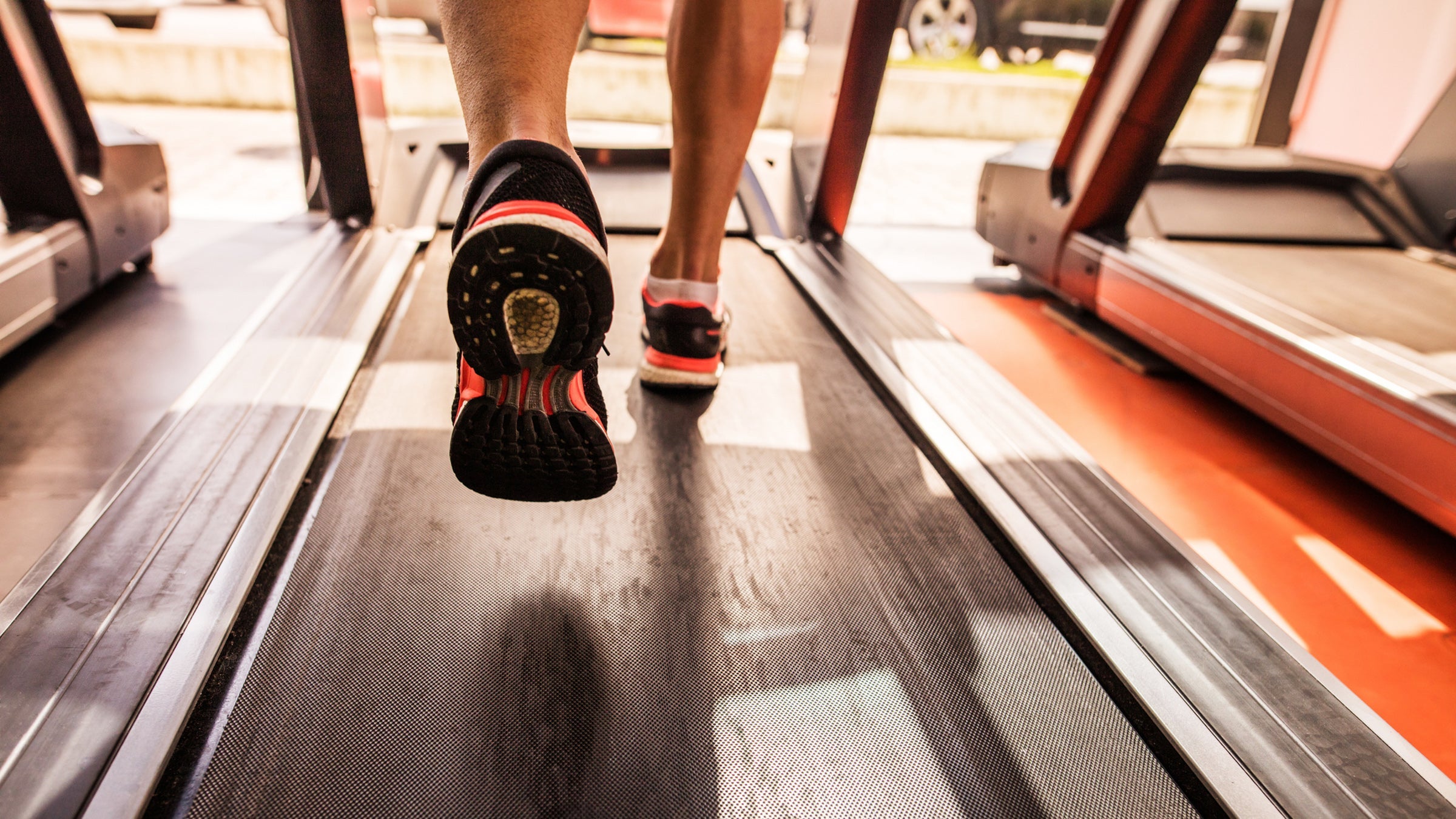Running on the treadmill is not for everyone. It requires a certain type of mental focus to run in place for mile after mile, with no variation in terrain, no scenery to engage with. I used to deride it, arguing that real runners run outside. But over time I’ve changed my perspective, and now believe, based on experience, that it can be a great tool that allows for consistent effort in a dependable, weather-neutral environment.
When I graduated from Butler University in the spring of 2002, I moved from Indianapolis to join the Hanson Elite group in Rochester, Michigan. My first winter in Michigan was filled with extreme negative temperatures, ankle-deep snow, and other various harsh winter weather elements that plagued our daily training.
Our workouts were invariably more about keeping solid footing—not twisting an ankle or breaking a limb—than they were about genuine effort. I specifically recall Brian Sell, a future Olympian, falling three times during an interval workout around ice-filled neighborhood roads. Everyone was sliding, falling, and risking injury on nearly every turn.
Even in those types of conditions, utilizing a treadmill was never sincerely considered. Running outside in bad conditions, it was argued, makes you “tougher.” Perhaps there is some truth to this, but when I moved out to Boulder, Colorado, I decided being “tough” was more about overall effort than it was about simply battling the elements and staying upright in icy conditions.
So I bought myself a sturdy, used, commercial treadmill—and my PRs started to drop. Not immediately, I actually had to use it first. And I did use it, with vigor.

In early 2008, training in Boulder without a group, I had my sights set on the mid-April Rotterdam Marathon in the Netherlands. I had two focal points to my training: hard-effort long runs and tempo workouts at goal race pace. For me, the best way to guarantee consistency was to use a treadmill that was always available despite the often-unpredictable weather conditions.
As I racked up the miles on the ’mill, I learned some tips that not only allowed me to train successfully on a treadmill, but assisted in dramatically improving my performances.
1. Find a treadmill that feels accurate and stick with it
If you go to a gym and you’re confronted with an assortment of treadmills, you are not going to be able to calibrate every machine that you happen to have available. But you can try to stay as consistent as possible to what treadmill you do use, so you can gauge progress from one run to the next. Whether a treadmill is perfectly calibrated really isn’t what ultimately matters. What matters is effort and consistency on a type of machine that you have used previously and therefore have a base of measurement to reference.
2. Level your machine
If you have a treadmill at home, ensure that it is level and not leaning down or up, even slightly. Perhaps more importantly, make sure it is level on the sides and not leaning, even slightly, left or right. If it is, that slight lean can lead to unexpected injury—such as a calf that has to work hard to keep balance. After 10,000 steps, even a modest lean can lead to a severe injury. I still believe that an imbalanced treadmill lead to me withdrawing from 2012 Olympic Trials marathon.
3. Put a mirror in front of you
Seems narcissistic, I know. But seeing yourself run helps you maintain better awareness of your form and thereby manage your fatigue. Are your arms creeping up and forward at the end of a long run? Are you clenching your hands into tight fists or straining your face and wasting energy? Is your head tall and your eyes up, rather than leaning forward, looking toward the ground? Observing your gait can allow for better body awareness and keep you more relaxed, which helps you run efficiently and minimize fatigue. Being aware of your tendencies is the first step to helping you overcome them—and when the race comes, you’ll be better prepared, having established better habits and developed postural endurance.

4. Get a big fan
You will often hear that the treadmill doesn’t provide the natural wind resistance that you feel when running outside. Perhaps this is true. But you can offset that by putting up a big, industrial fan to provide some artificial wind resistance. With a powerful fan in front of you, it’s possible to simulate the effect of minor wind resistance. However, it’s not critical that you perfectly emulate outside conditions; instead, what matters more is effort. If you’re running with effort, your overall running fitness will improve as a result.
5. Build consistency on tempos and long runs
Everyone knows one of the most important aspects of a good training segment is consistency. Guess what? The treadmill is always available and it’s always exactly where it was before (usually). You can measure progress more effectively because you have a consistent environment on the same (or similar) machine.
A consistent environment allows for a consistent schedule. You can plan better. For example, long runs are not as unpredictable. No stopping at lights. No worrying about traffic or slippery conditions. No widely fluctuating temperatures or terrain. No needing to measure your course or mark off miles. No placing water bottles every 5K. It’s all there for you; you can always get your fluids and get the practice you need drinking them.
Tempo runs are, perhaps, even more critical to run in a consistent environment because you are able to measure your progress much more accurately. It’s difficult to get similar conditions outside; one week it may be hot and the next week it’s windy. It’s hard to know where your progress is if the conditions vary so dramatically. The treadmill lets you know exactly where you are within your training segment. And, similar to long runs, you can practice drinking fluids at race pace—which, as everyone knows, is not particularly effortless.
6. Take it easy
If you’re anything like me, you run too hard when you shouldn’t. Recovery runs are meant to do just that: be easy and allow for recovery. When you want to actually do a recovery run, set that pace to something super slow and turn on the TV or some music and zone out. The treadmill allows you to set a pace and to keep that pace without worry, and without the typical pace-creep as you warm up and lose focus. There is tremendous value in simply running easy.

Progress, Confidence, and Success
Preparing for Rotterdam, I did lots of tempos and long runs—and they were all on the treadmill.
The treadmill let me accurately measure my progress. From when I started my training segment to when I ended it, just prior to the race, I knew how much I had improved. I also knew what my race pace should be, because I was able to consistently hit that pace on the treadmill. I had the data. Knowing exactly how I had improved gave me confidence in the race.
I also didn’t have to miss any tempo or long runs because of poor conditions. I was able to practice drinking fluids, get my recovery runs in at the optimal race pace, and, when race day came, I was more prepared and confident because of it. After the long winter of focused treadmill training, the payoff came when I ran a 6-minute PR of 2:13 in April.
Yes, a treadmill can be boring, but it can also be used as a productive training tool.


